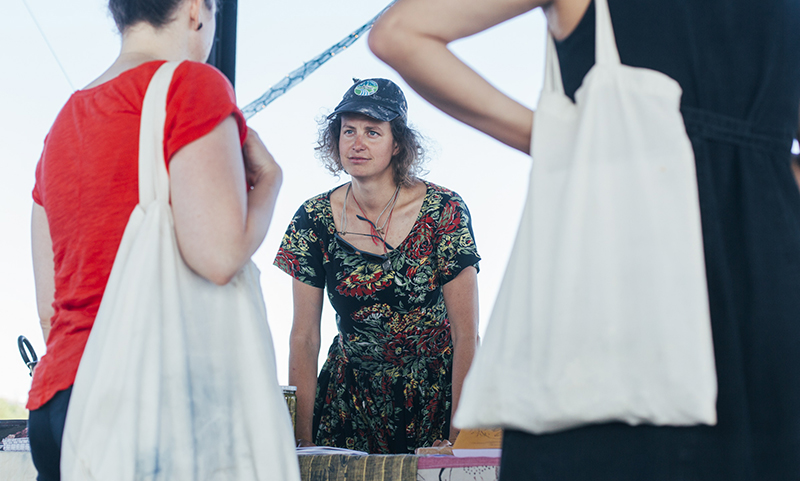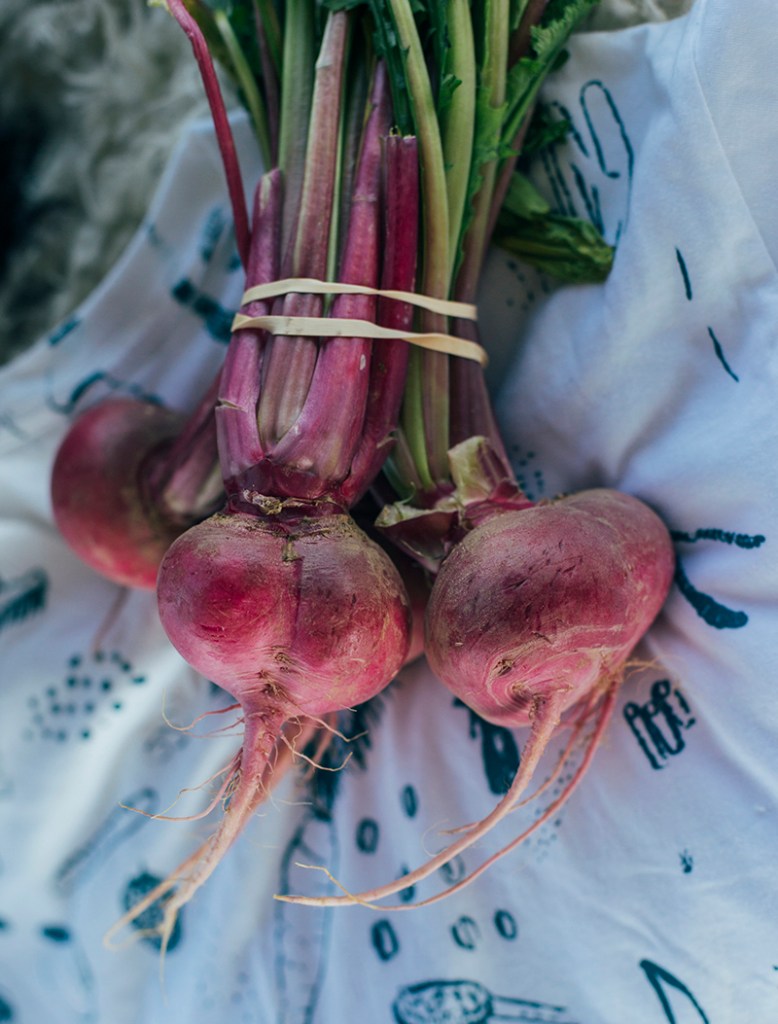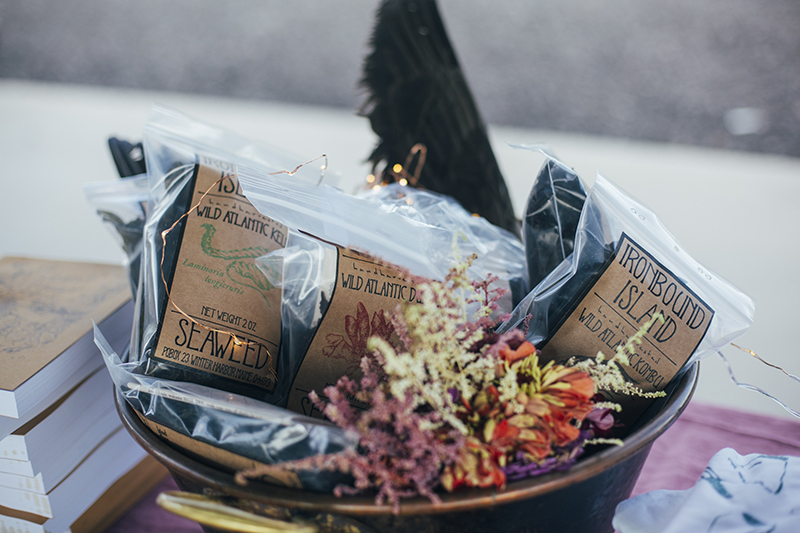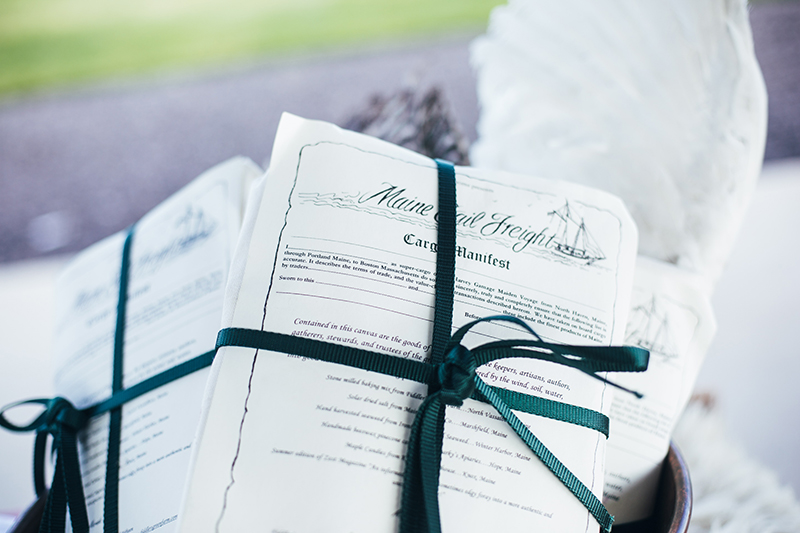When the wooden two-masted schooner Harvey Gamage sets sail from Portland in late August, laden with Maine farm products destined for Boston markets and restaurants, it will probably look like a historical re-enactment to those watching from shore.
But to Severine von Tscharner Fleming, it is so much more. It is performance art at sea. It is an economic experiment. It is a bridge between generations. It is both a protest of the failings of the global food system and a celebration of Maine’s regional food economy.
“We don’t need a logarithm of some venture capital-funded technology company to help us do the logistics of selling our food to Boston,” Fleming said. “We can do it with clipboards. We can do it with sailboats.”
Fleming is a community organizer working on the maiden voyage of the Maine Sail Freight project, a summer-long spectacle that will blend social media and “sailor’s gossip,” vinyl records and sea shanties, computers and cargo logs. Many pre-sail events and “side stunts” have already been held this summer to bring attention to the project, including a “teach-in,” picnic and concert in Portland last week. Still to come are a working shipyard dinner in Portland and a parade of traditional Norse wooden boats down the Kennebec River.
Sponsored by Greenhorns, a national young farmers organization, Maine Sail Freight harkens back to the days when Maine products were transported by ship rather than 18-wheeler, on ocean routes that were the I-95 of the 19th century.
In all, the effort involves nine ships, including a schooner from Penobscot, a windjammer from Rockland and those four Norse boats. They will rendezvous at North Haven Island on Aug. 23 and load about a ton of cargo – mostly food products from Maine farms – onto the Harvey Gamage, a replica of a 19th-century coastal schooner owned by local businessman Phineas Sprague. On Aug. 27, another 10 tons of cargo will be loaded in Portland. Total value: $70,000.
A similar project in Vermont last year transported foods from 37 farms on a barge down Lake Champlain and the Hudson River to Manhattan. The floating market made 13 stops and sold $50,000 worth of food. It was the project’s second trip.
The Maine ship is scheduled to arrive in Boston Harbor Aug. 29 and unload the next day. Its goods will be sold and distributed in individual parcels dockside, at the Boston Public Market, and via bicycles to individuals, businesses and restaurants that have pre-ordered.
The project is also selling the experience of being a part of the sail, offering berths on a sliding scale to anyone who wants to tag along – especially young farmers.
And what’s in the cargo? Mostly food items, such as beans, onions, grains, goat milk caramels and wild-harvested seaweed. There will also be some wool and tanned hides of sheep and cashmere goats. The items are “traditionally packaged” in bundles and are being sold in a range of prices, from $35 to $275.
“That’s one thing we learned from Vermont – bundle,” Fleming said. “No more soggy cardboard.”
A $55 flour sack, for instance, is filled with dried seaweed, beeswax candles, Maine sea salt, maple candies and other value-added farm products. At the top end, for $275, customers can buy a wooden potato barrel, handmade in Bridgewater, that is stocked with Fiddler’s Green baking mixes, dried goat sopressata, a CD of Maine sea shanties, fruit preserves, dried beans, popcorn, maple candies, sea salt, sea weed, candles and a book about the history of farming on North Haven Island.
The cargo also includes a new Farmers Almanac-style publication and a new vinyl recording of songs from the grange, circa 1870, which will be played on a Victrola as the Harvey Gamage sails into Boston Harbor.
This is not your great-great grandfather’s cargo manifest. Schooners in the 19th century exporting Maine goods were more likely to be carrying building materials such as granite, lime and lumber, according to Cipperly Good, collections manager and assistant curator at the Penobscot Marine Museum in Searsport.
“This is definitely how goods went to market back as late as the early 1900s,” she said. “Maine granite can be found throughout the United States – the Brooklyn Bridge, cathedrals, government buildings.”
Some food was transported as well, she said – at a potato wharf in Stockton Springs, potatoes from Aroostook County were unloaded from trains onto ships – but most agricultural goods were sold locally.
Good expressed some skepticism about the practicalities of shipping by sail in the 21st century, but added that the Maine Sail Freight project is environmentally friendly and “puts Maine back on the map.”
“This is not the first time this has been tried,” she said. “It would be awesome if it did work, but I think it comes down to economics.”
Fleming noted that shipping lines once traveled between Lubec and Boston, and some ships would stop at Maine islands along the way and pick up farm goods. One ship, she said, stopped in North Haven in the evening to pick up eggs, butter, lamb and other products to transport to Boston the next day.
Fleming has gathered a list of contemporary sail freight projects worldwide on the Greenhorns website.
Twenty-first century economics is the factor most likely to sink such a project, but Fleming says the numbers can work. She said the cost of moving the Maine cargo to Boston, one way, is about $8,000 (mostly the cost of chartering the ship), while shipping that same cargo by truck would only cost $1,000. But looked at bundle-by-bundle, she argues, “the core economics pays for itself.”
“Actually, on a price per pound basis, for shipping, our little bundle costs less to ship by boat than a U.S. Postal Service flat rate box,” she said. “We have completely transparent terms of trade. So 60 percent of the dollar that the consumer spends goes to the farmer, 30 percent goes to Fiddler’s Green, and 10 percent goes to Greenhorns for shipping.” (Fiddler’s Green coordinates the cargo, warehouses it, provides product and handles online sales.)
Compare that to more modern transportation methods. According to the U.S. Department of Agriculture Economic Research Service, American farmers receive 15.8 cents on every consumer dollar spent on food.
The Maine Sail Freight project also has the advantage of being run by a nonprofit that is taking care of all the programming and marketing costs. Some of the crew will be paid, others are trainees.
The bottom line? Romance – even with a nautical theme – sells. Marketing Maine agricultural goods in such a fun way generates buzz and gets the Maine brand some attention. And it opens the door to more challenging conversations about rebuilding the regional food infrastructure and transitioning Maine farms to a younger generation, Fleming said.
“We’re infusing this dialogue with whimsy, but it’s actually pretty serious,” she said. “If we can charm our way in with a sailboat, and then move on to the tough talk of intergenerational planning and intergenerational power sharing and intergenerational knowledge sharing, then let’s do it. Is the waterfront just for billionaires and their yachts? No.”
Tammy Knight, who oversees the state’s Maine Products Marketing Program, said many of her members have already had good sales in Boston. Some of them travel weekly to the South End Open Market and Greenway Open Market. The Maine Freight Sail project, she said, is “a great opportunity” to expand on that and showcase Maine goods “in a very unique way.”
Fleming said one reason the project is being done this way – performance art-style, and funded by a nonprofit – “is to gather really good data and to figure out what the barriers are to trade.”
One barrier they’ve found, for example, is that insurers require containerized cargo, but putting cargo on the deck of a schooner makes the ship less stable. Another barrier: The licensing process for vessels made of wood disappeared with Martha, the world’s last passenger pigeon.
“The Coast Guard basically doesn’t have a category to put us in,” Fleming said.
A future Sail Freight program will involve asking young captains to examine these barriers and other data gathered during the August sail and then present business plans to overcome them.
Meanwhile, Maine Sail Freight will continue to spread the word through social media and “sailor’s gossip,” merging centuries of communication methods so as not to ignore the human touch.
“It’s from one hand to another, from the farm, to the box, to the boat, to the sail, to the dock, to the bike,” Fleming said. “It’s all by hands, all by the power of our bodies and the wind.”
Copy the Story Link
Send questions/comments to the editors.








Success. Please wait for the page to reload. If the page does not reload within 5 seconds, please refresh the page.
Enter your email and password to access comments.
Hi, to comment on stories you must . This profile is in addition to your subscription and website login.
Already have a commenting profile? .
Invalid username/password.
Please check your email to confirm and complete your registration.
Only subscribers are eligible to post comments. Please subscribe or login first for digital access. Here’s why.
Use the form below to reset your password. When you've submitted your account email, we will send an email with a reset code.